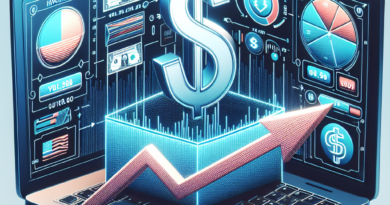Why will the risk premium on Treasuries rise in the coming months?
Changes in bond yields, implied inflation rates and inflation-adjusted real yields suggest that investors expect the Fed's "higher for longer" interest rate policy to help reduce inflation at around 2.5%.
The annual consumer price inflation of around 2.5% could legitimately be considered a success, especially if we take into account that it was 9% in June last year, especially if the much desired "soft landing" of the economy and avoid a painful recession.
Policymakers would probably welcome this situation, but they will never admit it.
They will insist that policy be set to bring inflation back to 2%, implying that there will be no slowdown in rates, as investors have long predicted.
This suggests that the Fed is entering a phase of structurally higher rates than perhaps policymakers themselves, and certainly investors, had anticipated.
What is curious about all this is that the bond market seems to accept that the economy will remain relatively strong and that policy will remain restrictive for longer, but it is not convinced that inflation will fall to 2%.
Many analysts are skeptical that changes in bond yields can be broken down and quantified with any high degree of precision.
There are too many factors at play, especially in the long term.
But interest rate strategists at Goldman Sachs have been trying to analyze what's behind the 10-year bond sell-off in recent months, which has sent yields rising more than 50 basis points to a 16-year high above 4, 50%.
They attribute just under half the increase to monetary policy — investors are finally realizing the Fed is here to stay with higher rates — and about a third to higher growth.
Inflation – essentially increases in supply – account for a fraction of the increase, according to their estimates.
This ties in with what implicit inflation rates and real yields in recent weeks indicate: shorter-term rates are falling, while longer-term rates are rising.
Implied two-year inflation rates stand at around 2.35%, compared to a low below 2.00% in July, but lower than this month's peak above 2.50%.
The implied 10-year inflation rate stands at around 2.40%, compared to lows around 2.30% in May, June and July.
Implied inflation is the difference between the yield on a nominal bond and the yield on an inflation-linked bond of the same maturity.
The result is an implicit forecast by traders of the average inflation over the relevant time period.
The yield on two-year inflation-linked Treasury securities (TIPS) has fallen from a high of about 3.15% in July to 2.80% now, not far from where it was in early August.
The 10-year TIPS yield, meanwhile, rose to a 15-year high of 2.20% from 1.60% in early August, and shows no signs of reversing.
TIPS are an important market-based indicator of investors' inflation expectations, but they have their flaws.
TIPS can be highly volatile, illiquid and driven more by portfolio hedging trades than direct bets on inflation.
Taken together, implied inflation rates and TIPS suggest that the inflation outlook is gradually moving closer to the Fed's 2% target.
Marvin Barth, founder of the independent research firm Thematic Markets, believes that long-term yields could rise by another 150 basis points or so.
“This is a question of inflation expectations, and they are rising.” Barth and others argue that the surge in long-term yields is due to the risk premium.
This is the reward that investors require for taking on interest rate risk during the life of a bond, which theoretically is higher the longer the maturity.
This contributes to a steepness – or disinversion – of the yield curve.
Long-term yields have been well below short-term yields for more than a year, but the gap is narrowing rapidly, another sign that pessimism about the economy is fading.
“It all depends on the risk premium,” says Torsten Slok, chief economist and partner at Apollo Global Management.
“The concern is that despite the large movement in the risk premium since late July, it is still significantly below its historical average.” These developments in the US bond market are attracting the attention of investors and analysts around the world.
As the Fed tries to manage its interest rate policy amid rising inflation and growing economic uncertainty, investors are trying to interpret market signals to understand what the future of monetary policy and investment might look like.
It remains to be seen whether inflation expectations will come true and how this will affect the global economy in the coming years.
read also Global economy heading towards the abyss with these 4 ongoing crises




